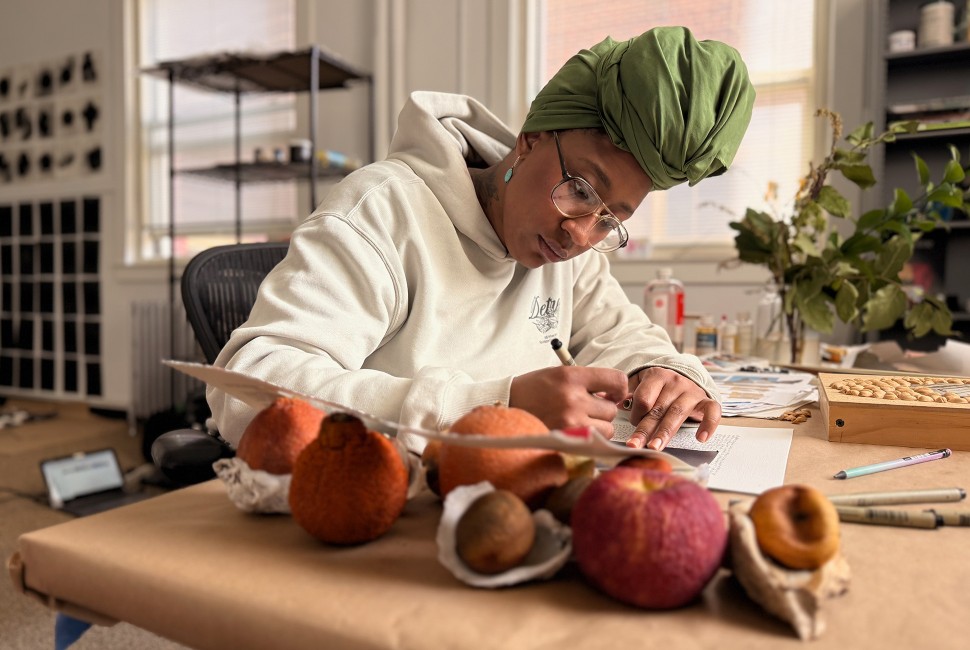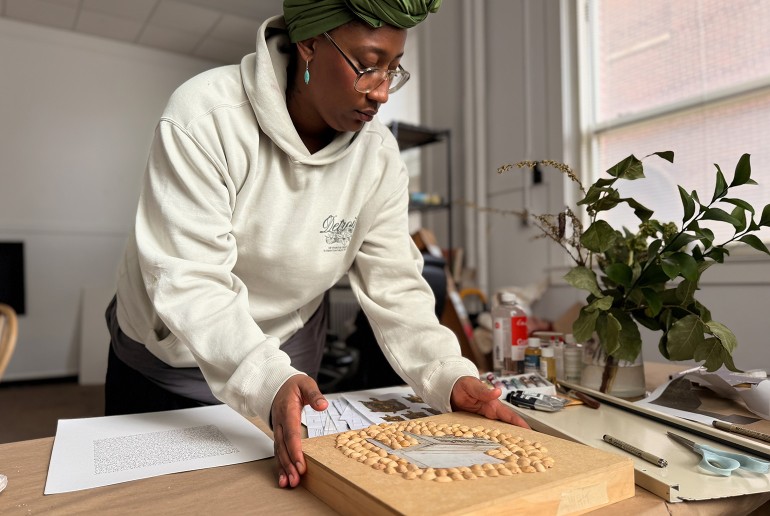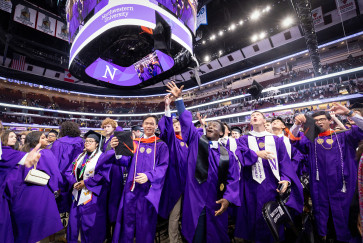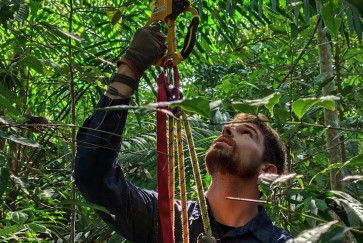bree gant is in her studio in Locy Hall writing. Her words flow horizontally across the page, wrapping left to right down the page. Like movements in a dance sequence, the word order changes slightly with each repetition, creating subtle shifts that impact the emphasis and meaning of the phrases.
Writing is material
“One of my professors Lane (Relyea) says, writing is material. It’s become another core tool I use in my practice. It gives me language I can return to, including the way I talk about my practice,” gant said.
gant’s practice intersects lens-based art and performance, often using dance, film and movement studies, and her work is among those featured in the MFA thesis exhibition “A New State of Matter” on view at The Block Museum May 9 to June 22. A member of Northwestern’s class of 2025, gant plans to pursue teaching opportunities in the Midwest, maintain her studio practice, and promote conversations between Detroit and Chicago’s arts ecosystems.
Using several mediums
gant’s MFA thesis project, “Negotiation,” is a multichannel video installation incorporating mediums and ideas she has explored during her time at Northwestern. The six-minute film shows entwined bodies pressed into the snow-covered grounds outside the Brutalist architecture of Deering Library. The bodies adjust subtly in an environment that looks cold and unforgiving. A soundtrack of tinkling chimes immerses viewers in the scene. The sounds are made by chimes gant created from oyster and mussel shells collected from meals with friends and family and denim fabric from jeans that belonged to a great aunt.
gant studied film as an undergraduate in Washington, D.C., before returning to her hometown of Detroit to practice art for several years before beginning the art theory and practice MFA program at Northwestern.
The evolution of an artistic mission
“I came into my voice in Detroit. Riding on the bus in the Motor City is an integral foundation to my practice. It’s land reverence, it’s political education and it’s also social performance,” gant said. “Depending on the bus and public transit to move through the world really puts you in a particular place of witnessing and waiting.”
gant says her current interest is in exploring the threshold between interior and exterior worlds, including how self-understanding influences the way we narrate and relate to the world around us. Performance allows her to engage with and move through the world, while the lens medium offers a way of witnessing and theorizing with her performance.




